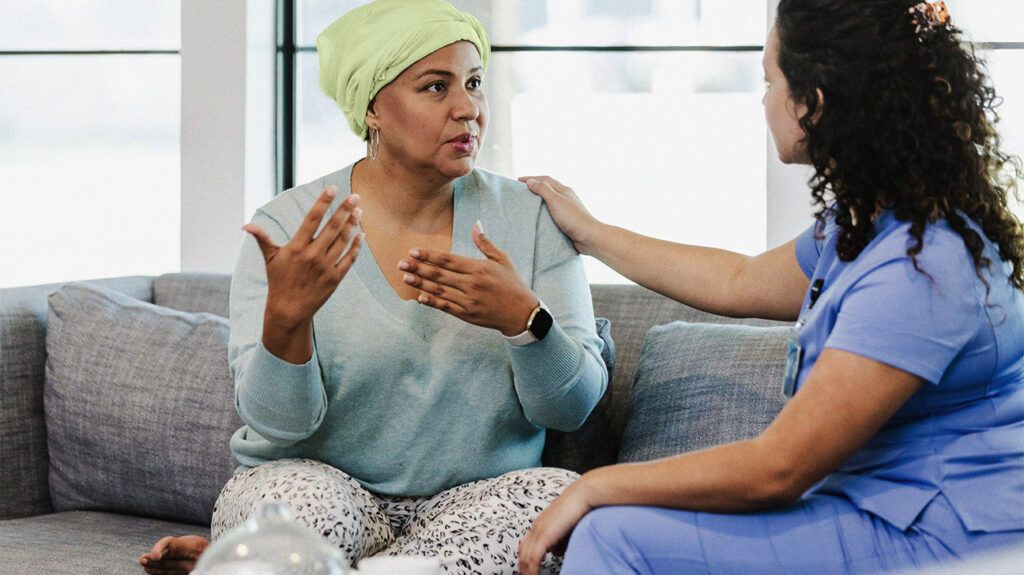In some cases, radiation therapy can damage healthy skin cells as well as targeted cancer cells. This can cause skin changes that appear as burns.
Radiation therapy kills cancer cells or stops them from growing by using different types of radiation or high-energy X-rays.
Cancer doctors, or oncologists, may prescribe this treatment independently or as part of a treatment program that can include surgery, chemotherapy, hormone therapy, immunotherapy, or targeted therapy. The type of treatment will depend on the stage and type of breast cancer.
This article discusses what radiation burns are and why they happen. It also discusses their appearance, other symptoms, and how a person can manage them.

Approximately
The side effects of radiation depend on the location and type of cancer, the person’s general health, and the radiation dose.
When people receive radiation treatment daily, or almost daily, their skin cells do not have enough time to regrow between treatments. This can cause changes to the skin, which can appear as moderate to severe burns.
There are
- External radiation therapy: This uses a large machine to aim a beam of high-energy X-ray radiation at the affected area of the breast or the entire breast.
- Internal radiation therapy: This is a form of treatment that involves placing radiation inside a person’s body near the cancer. Internal therapy can involve taking a capsule or receiving a liquid through an IV line.
Learn more about the types of radiation therapy.
According to the
- Skin discoloration: The skin may become red or darker than the surrounding area.
- Dry, peeling, or blistered skin: A person’s skin may become extremely dry and peel in the treatment area.
- Swollen skin: The skin in the treatment area can swell and appear puffy.
- Moist reaction: The skin in the treated area can become sore, wet, and infected.
Skin changes happen gradually during radiation treatment and may only occur in certain areas.
People are more likely to experience them on parts of the body where skin touches, such as under the breast or the armpit. It can also occur in places with more sun exposure, such as the upper chest.
How does it feel?
In addition to visual skin changes, radiation burns may cause pain, tenderness, and itching.
Learn more about the side effects of radiation therapy.
Although it might not be possible to prevent radiation burns entirely, steps to help skin sensitivity during radiation treatment and help healing after treatment include:
Moisturizing regularly
From the start of the treatment, a person should moisturize after each treatment and at night with a moisture-rich ointment.
Taking care when showering or bathing
A person should use warm rather than hot water and prevent the spray from the shower head from directly hitting the treatment area.
The
Avoiding skin-to-skin contact
Skin-to-skin contact can cause friction, pressure, heat, and moisture. This most often occurs:
- in the armpit
- under the breast
- between the breasts
If a person is not wearing a bra, placing soft material under the breast might be beneficial.
Avoiding picking at blisters or peeling skin
A person should allow the skin to grow back and avoid disturbing the area.
The exposed area may be weepy and painful. Anyone who develops open sores should inform their doctor and take steps to prevent infection in the area.
It is important to keep the area clean and dry and apply a non-adherent dressing.
Other suggestions
To ease pain, a person may take over-the-counter (OTC) medication, or a doctor may prescribe pain medication or antibiotics.
If the problem persists, a doctor may suggest a short break in treatment to allow recovery.
Learn about radiation dermatitis.
Skin changes may start a few weeks after a person begins radiation therapy. Many of these changes disappear a
For some people, the skin in the treatment area may always appear darker and blotchy. It may also feel thicker and drier than before. The skin in the treatment area will remain permanently sensitive to the sun.
Learn more about radiation for breast therapy.
People looking for support regarding radiation burns and breast cancer can connect with other people who have experienced it at the American Cancer Society’s free Reach for Recovery program. Here, a person can talk online or over the phone with a trained volunteer who has had breast cancer.
The program offers support for treatment, side effects, talking with family and friends, working during treatment, and more.
Organizations that provide support include:
- Breastcancer.org
- Living Beyond Breast Cancer
- The Male Breast Cancer Coalition
- The National LGBT Cancer Project
Several breast cancer organizations provide support specifically for people of color. These include:
- African American Breast Cancer Alliance
- Sisters by Choice
- Sisters Network
- Black Women’s Health Imperative
Organizations based in the United Kingdom include:
Breast cancer treatment often involves radiation therapy. This may lead to changes in the skin, which appear as burns. This occurs because the radiation damages healthy skin cells while killing or stopping the growth of cancer cells.
Radiation burns may make the skin appear discolored or darkened, blistered, swollen, and dry. The skin can also become painful and severely itchy.
To help manage the side effects, people can moisturize frequently, gently cleanse, avoid irritating blistered or broken skin, protect their skin from the sun, and wear comfortable clothing. A doctor may prescribe pain medication or antibiotics or may halt treatment for a short while to allow the skin to heal.
